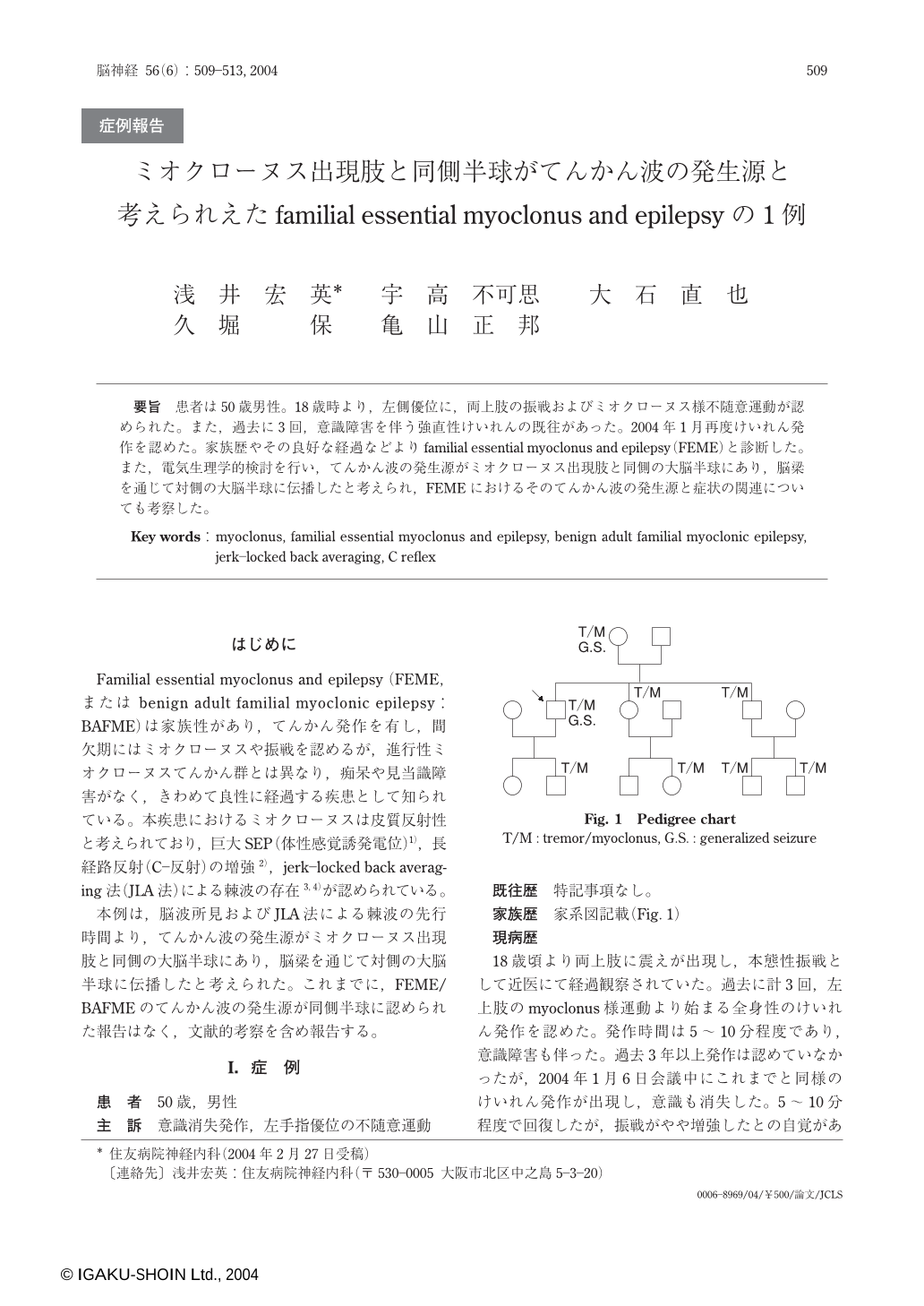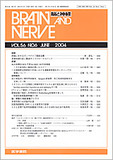Japanese
English
- 有料閲覧
- Abstract 文献概要
- 1ページ目 Look Inside
要旨 患者は50歳男性。18歳時より,左側優位に,両上肢の振戦およびミオクローヌス様不随意運動が認められた。また,過去に3回,意識障害を伴う強直性けいれんの既往があった。2004年1月再度けいれん発作を認めた。家族歴やその良好な経過などよりfamilial essential myoclonus and epilepsy(FEME)と診断した。また,電気生理学的検討を行い,てんかん波の発生源がミオクローヌス出現肢と同側の大脳半球にあり,脳梁を通じて対側の大脳半球に伝播したと考えられ,FEMEにおけるそのてんかん波の発生源と症状の関連についても考察した。
A 50-year-old man who first noticed shaking of the hands at age of 18 and had previous history of three convulsive episodes was admitted to our department because of the generalized tonic seizure with loss of consciousness. Family history showed that 7 members had similar shaking and one had generalized seizure. On neurological examination, rhythmic myoclonic jerks were noted in the bilateral upper limbs, and was remarkably more severe on the left. Other neurological findings were normal. Based on the benign clinical course, familial history, and the normal range of pyruvate and lactate levels in serum and cerebrospinal fluid, we diagnosed familial essential myoclonus and epilepsy(FEME)/benign adult familial myoclonic and epilepsy(BAFME). After admission, we performed electrophysiological test. EEG showed spike discharge mainly in the left parietooccipital lobe. Jerk-locked back averaging(JLA)showed spikes 30 msec precedings the trigger in the left parietooccipital lobe. Because JLA spikes are commonly found 20 msec precedings the trigger, we consider the subtraction time of 10 msec was due to the conduction through the corpus callosum. Some reports showed that in progressive myoclonus epilepsy patients, transcallosal excitation of one hemisphere by the other was critical for generalized seizure. In cases of FEME/BAFME, epileptic focus in the hemisphere ipsilateral to the myoclonus limbs has not previously reported. Our case suggested that generalization of the seizure was caused by the interhemispheric excitation through the corpus callosum.
(Received : February 27, 2004)

Copyright © 2004, Igaku-Shoin Ltd. All rights reserved.


